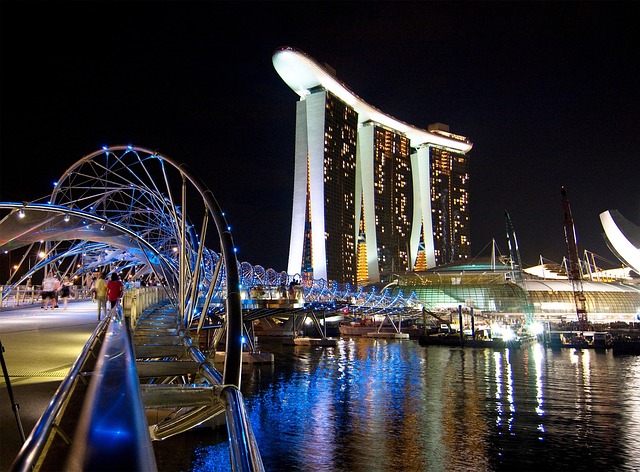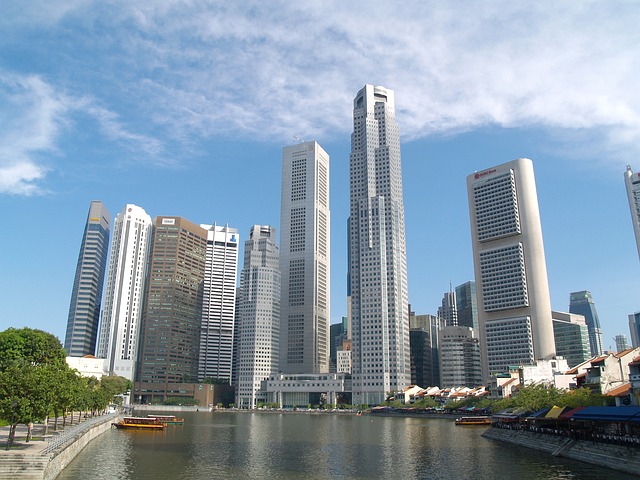The Chuan Park Condo in Singapore's District 21 offers a luxurious living experience that seamlessly blends opulence with eco-friendly design. Set amidst natural beauty, this high-end development features premium amenities including a 50-meter pool, tenn…….
Category: chuan park residences
Introduction
Chuan-Park-Residences represent a novel approach to urban living, seamlessly blending residential spaces with the natural environment of parks. This concept has gained prominence as cities worldwide seek sustainable and integrated solutions to accommodate their growing populations. In this article, we will delve into the intricacies of Chuan-Park-Residences, exploring their multifaceted impact on urban development, environmental sustainability, and social cohesion. Readers will gain a comprehensive understanding of how these residences are redefining modern living standards and their potential to shape future cityscapes.
Understanding Chuan-Park-Residences
Chuan-Park-Residences are not merely homes nestled within parklands; they embody a holistic lifestyle that promotes a symbiotic relationship between inhabitants and the surrounding environment. These residences often incorporate green spaces, recreational facilities, and eco-friendly features to enhance the quality of life for residents while preserving natural ecosystems.
The core components of Chuan-Park-Residences include:
- Eco-friendly materials and construction methods
- Integration with existing parklands or creation of new green spaces
- Design elements that maximize natural light and ventilation
- Community spaces that foster social interaction and well-being
- Proximity to nature for mental and physical health benefits
Historically, the concept of integrating residential living with parks dates back to the early 20th century with the Garden City Movement. This movement, pioneered by architects like Le Corbusier, advocated for self-contained cities with plenty of green spaces, aiming to solve overcrowding and pollution issues in industrial cities.
Chuan-Park-Residences continue this legacy, adapting it to contemporary challenges such as climate change, urban sprawl, and the need for sustainable communities.
Global Impact and Trends
The influence of Chuan-Park-Residences is evident across various regions, each adapting the concept to its unique context. In Europe, for instance, there is a growing emphasis on retrofitting existing urban areas with green spaces, as seen in the “Baugruppen” model in Germany, where residents collectively own and manage their buildings and shared amenities.
In Asia, cities like Singapore and Shanghai have pioneered innovative approaches to integrating high-density living with nature, setting global benchmarks for sustainable urban development. The “Vertical Forest” project in Milan, Italy, exemplifies this trend, with two residential towers featuring over 20,000 trees and 900 shrubs.
Key trends shaping the trajectory of Chuan-Park-Residences include:
- Increased focus on biophilic design, which connects occupants to nature through design elements.
- The rise of smart home technology that enhances energy efficiency and sustainability.
- A shift towards communal living spaces that encourage social interaction and shared responsibilities.
- The integration of renewable energy sources like solar panels into residential architecture.
Economic Considerations
The economic implications of Chuan-Park-Residences are multifaceted. They represent both an investment opportunity and a strategic approach to urban development, balancing economic growth with environmental conservation.
Market dynamics for such residences are influenced by factors such as:
- The socio-economic profile of the target demographic
- The availability of land and its cost, particularly in prime locations close to nature
- Government incentives for sustainable building practices
- The perceived value of living in an environmentally friendly and health-conscious community
Investment patterns in Chuan-Park-Residences show a growing trend towards sustainable real estate, with investors recognizing the long-term viability and appeal of eco-friendly homes. These residences not only offer a unique lifestyle but also contribute to economic systems by creating jobs and stimulating innovation in building materials and technology.
Technological Advancements
Technology plays a pivotal role in advancing the concept of Chuan-Park-Residences. Innovations in green construction, energy efficiency, and material science have led to more sustainable and resilient buildings.
Significant technological advancements include:
- Advanced insulation materials that reduce energy consumption for heating and cooling
- Smart home systems that optimize energy usage based on occupancy patterns
- Water recycling and conservation technologies that minimize waste
- Renewable energy systems, like solar photovoltaic panels and wind turbines, integrated into the building design
The future potential of technology in Chuan-Park-Residences lies in further integrating IoT devices, artificial intelligence, and machine learning to enhance sustainability and resident comfort. These advancements will likely lead to smarter, greener, and more self-sufficient living environments.
Policy and Regulation
The development of Chuan-Park-Residences is guided by a mix of policies, regulations, and legislative frameworks that prioritize sustainable urban development. These include:
- Zoning laws that allocate specific areas for green spaces and residential buildings
- Building codes that mandate energy efficiency and the use of sustainable materials
- Subsidies and tax incentives for developers who incorporate nature into their projects
- Environmental impact assessments to ensure minimal disruption to existing ecosystems
Governments worldwide are recognizing the importance of integrating nature into urban living through policy reforms. For instance, the United Nations’ Sustainable Development Goals (SDGs) emphasize sustainable cities and communities, directly supporting the ethos behind Chuan-Park-Residences.
Case Studies: Successful Chuan-Park-Residence Projects
-
Dongtan Eco-City, China: An ambitious project aimed at creating a self-sustaining eco-city with zero carbon emissions, Dongtan is an example of how Chuan-Park-Residences can be planned on a large scale.
-
Bryant Park, New York, USA: A classic example of integrating urban green spaces into high-density living areas, Bryant Park demonstrates the social and economic benefits of such projects.
-
Eko Atlantic City, Nigeria: Designed to be a resilient city against sea-level rise, Eko Atlantic showcases advanced infrastructure and sustainable living practices.
-
PlanIT Valley, Portugal: A smart city project that uses IoT technology to manage traffic, energy consumption, and waste management, PlanIT Valley is a forerunner in the integration of smart technologies with green spaces.
Conclusion
Chuan-Park-Residences represent an evolutionary step in urban living, blending comfort, sustainability, and community. As global trends show, this concept is gaining traction across various regions, adapting to local contexts while maintaining a commitment to environmental stewardship and social well-being.
The future of Chuan-Park-Residences lies in continuous innovation in design, technology, and policy frameworks that can address the challenges of urbanization. With the world’s population becoming increasingly urbanized, these residences offer a blueprint for sustainable and livable cities that can serve as models for generations to come.
Elegance and Nature Unite at The Chuan Park Condo, Singapore’s Premier Residential Destination
The Chuan Park Condo in Singapore is a prestigious residential development offering luxurious living spaces with a focus on sophisticated comfort, elegance, and exclusivity. Set amidst the serene yet connected District 21, this condo boasts advanced amenities…….
Chuan Park Residences: Your Guide to Premier Living in Singapore
The Chuan Park Condo Singapore is a luxury residential development offering an upscale living experience in the heart of the bustling city-state. It provides a harmonious blend of tranquility and urban accessibility with its strategic location, proximity to e…….
Chuan Park Residences: A Guide to Singapore’s Premium Urban Living
The Chuan Park Condo Singapore offers an unparalleled living experience with its prime location that balances tranquility with connectivity to the city's key attractions including the Central Business District and Orchard Road. This luxury development is…….
Chuan Park Residences: A Guide to Luxurious Living in Singapore
The Chuan Park Condo Singapore offers a luxurious and convenient urban living experience with its strategic location amidst lush greenery. This high-end residential development is designed for comfort and tranquility, featuring modern amenities such as a gymn…….
Elevate Your Living: A Guide to the Chuan Park Condo Experience in Singapore
The Chuan Park Condo Singapore offers luxury living amidst the tranquility of Bukit Batok, with its strategic location providing easy access to both natural serenity at Bukit Batok Nature Park and urban conveniences like shopping centers and the upcoming Buki…….
Relocating to The Chuan Park Condo: Your Guide to Lifestyle, Amenities, and Connectivity in Singapore
The Chuan Park Condo Singapore is a luxurious residential development offering a blend of tranquil living and urban convenience, nestled within the natural beauty of its surroundings. It features a comprehensive suite of amenities, including a modern gymnasiu…….
Residing at The Chuan Park Condo: A Guide for International Movers to Singapore’s Prime Living Space
The Chuan Park Condo Singapore is a luxurious residential development set within the lush greenery of Bukit Timah, offering residents a peaceful retreat while providing easy access to the city's amenities and transportation. It epitomizes modern urban li…….
Discovering Luxury Living: Inside The Chuan Park Condo, Singapore
The Chuan Park Condo Singapore epitomizes luxury living amidst a serene yet connected environment within District 19. This elite development boasts exquisite architecture and interiors that blend modern sophistication with the needs of contemporary life. It f…….
Chuan Park Residences: Efficient Living and Neighborhood Amenities in Singapore
The Chuan Park Condo in Singapore's District 23 offers a luxurious living experience that seamlessly combines urban convenience with nature's tranquility. Residents can enjoy maximized living spaces through clever use of multifunctional furniture, i…….









